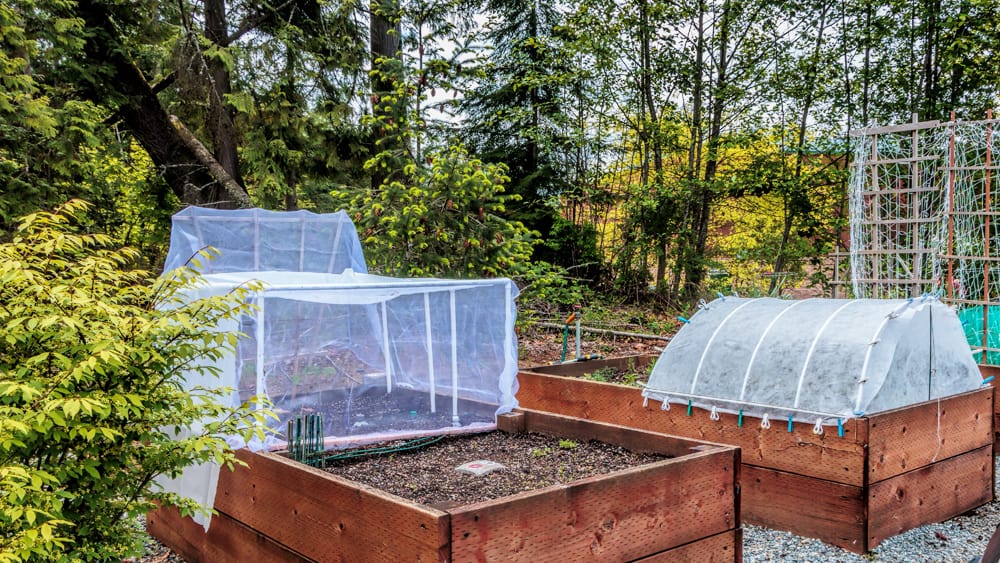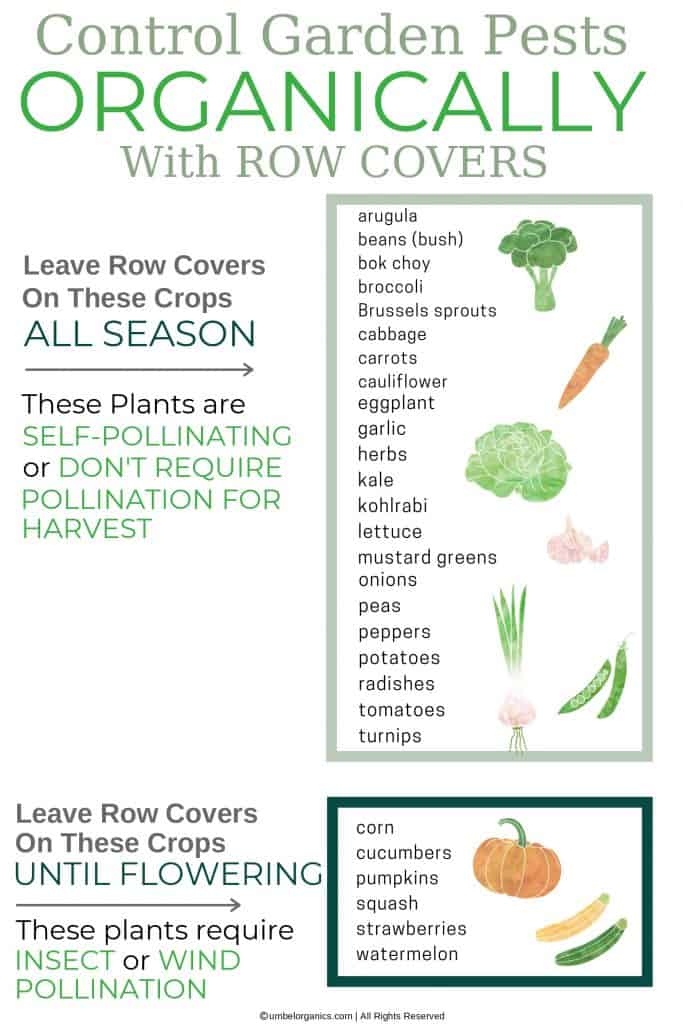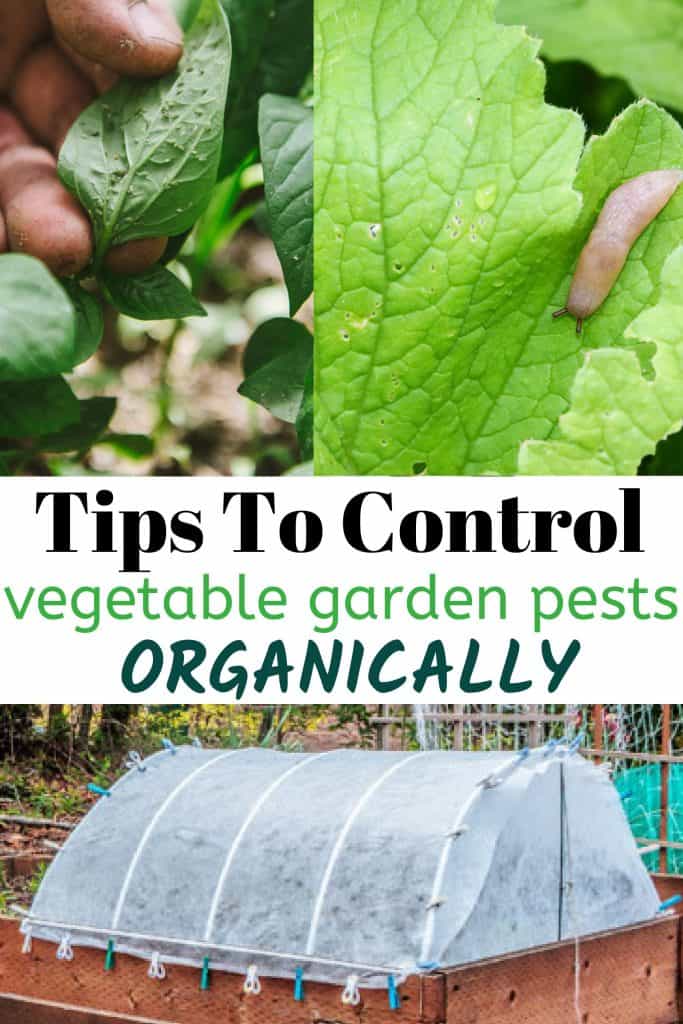Row Covers For Organic Gardening
Row covers provide protection against frost and UV damage, and they’re our number one method for organically controlling pests in the garden.

Disclosure: Our content contains affiliate links for products we use and love. At no additional cost to you, we’ll receive a commission if you click through and make a purchase.
Row covers play an integral part in the success of our garden. Beyond frost protection, row covers function as pest barriers and protect sensitive plants from UV damage. After losing a battle to a thrips invasion on a few of our tomato plants, Jeremy decided to try row covers the following spring.
They worked so well that row covers are now a major part of our organic gardening strategy—they’re the easiest way to organically control pests in our garden. We also love that row covers are inexpensive and easy to store when not in use.
What Are Row Covers?
Row covers are made of lightweight fabric that can be draped right on top of garden crops or attached to hoops or other structures. They come in different weights, which provide varying levels of frost protection (the heavier the weight the more protective). Heavier row covers also transmit less sunlight.
For insect control, we use row covers with 85% light transmission. They work well as an insect barrier and offer some freeze protection while allowing adequate light transmission. You can find row cover cloth with a higher percentage of light transmission (95%), but keep in mind that it rips easily.
You can water right through the row cover cloth. We’ve also found that row covers keep our neighbor’s cat from using the garden as his personal litter box, and the row covers deter the occasional rabbit that gets into our yard from feasting on the garden.
When To Put Row Covers On The Garden
Get row covers on germinating plants as soon as possible. If you are direct sowing into the garden, row covers can go on before plants start germinating or right when germination occurs. Draping row covers over hoop tunnels allows for more air circulation and doesn’t put pressure on emerging seedlings.
If you don’t have hoop tunnels, putting row covers directly over new seedlings will work. Just make sure to leave some slack in the row covers so seedlings can grow upward, and prop up the row covers with buckets or pails.
If you’ve grown your seedlings indoors or bought them from a nursery, put row covers over your crops right after you plant your seedlings. This approach limits pests right from the start. We use bricks around the edges of the row covers to keep them firmly in place.
Check For Pests!
Take a peek under the row covers daily and look for signs of pests. Check leaves for holes, chew marks, and trails of slime. You don’t want to trap a few pests under the row covers and let them multiply.
When To Take Row Covers Off
Take row covers off the plants that require insect pollinators such as squash and cucumbers when they start to flower. At this point the plants are hardy enough to withstand most pest attacks, and the offending pests have most likely already moved on. You’ll still want to check leaves for egg clusters and adult insects and hand pick them off.
If pests are a persistent problem, there are several options to try:
- Take the row covers off for a brief time during warm, sunny days to encourage insects to visit the plants, then recover with row covers after each pollination session.
- Briefly take off the row covers and individually pollinate each plant with a small art paintbrush. Distribute pollen to flowers on neighboring plants and then recover your garden bed with the row covers.
When To Leave Row Covers On
Keep row covers on brassica plants until harvest time. Plants in the brassica family include broccoli, kohlrabi, bok choy, cabbage, cauliflower, arugula, kale, radish, horseradish, turnips, and mustard greens. The flea beetle is extremely invasive if these plants are not covered at all times.
Keep row covers on spinach, Swiss chard, and beets at all times. Pests such as the beet leaf miner and crown mites can do major damage to the leaves.
Tomatoes almost always self-pollinate, and we keep row covers on until harvest time to deter thrips. We’ve found that our tomato plants set just as much fruit under the row covers as they did before using them.
Keep row covers on onions at all times. We previously had problems with onion flies turning our onions into mush, but row covers have eliminated that problem.
Not only do row covers protect against nearly all pest problems, but we also find that plants get a boost from the protection against the elements during the early season and grow much faster and healthier.
Row Covers & UV Damage
Another benefit of using row covers in the garden is for sun protection. Row covers provide relief from the intense sun for cool weather crops such as kale.
Hardening Off/Transplant Shock
Seedlings that have been grown indoors can benefit from row covers during the hardening off process. Hardening off requires exposing seedlings that are grown indoors to outdoor sunlight in incremental steps. This can take about a week to get the new plants used to outdoor sunlight, and row covers can diffuse the harsh light and offer some protection from UV damage.
Watch For Weeds!
As much as we love row covers, so do the weeds. One disadvantage to using row covers in the garden is weed growth. Weeds also love the slight temperature increase from the row covers and grow at an accelerated rate. We think the advantages outweigh this disadvantage, so go cover your garden!


More Gardening Inspiration
Photo images via Adobe Stock. All infographic images in this post created by Umbel Organics.

